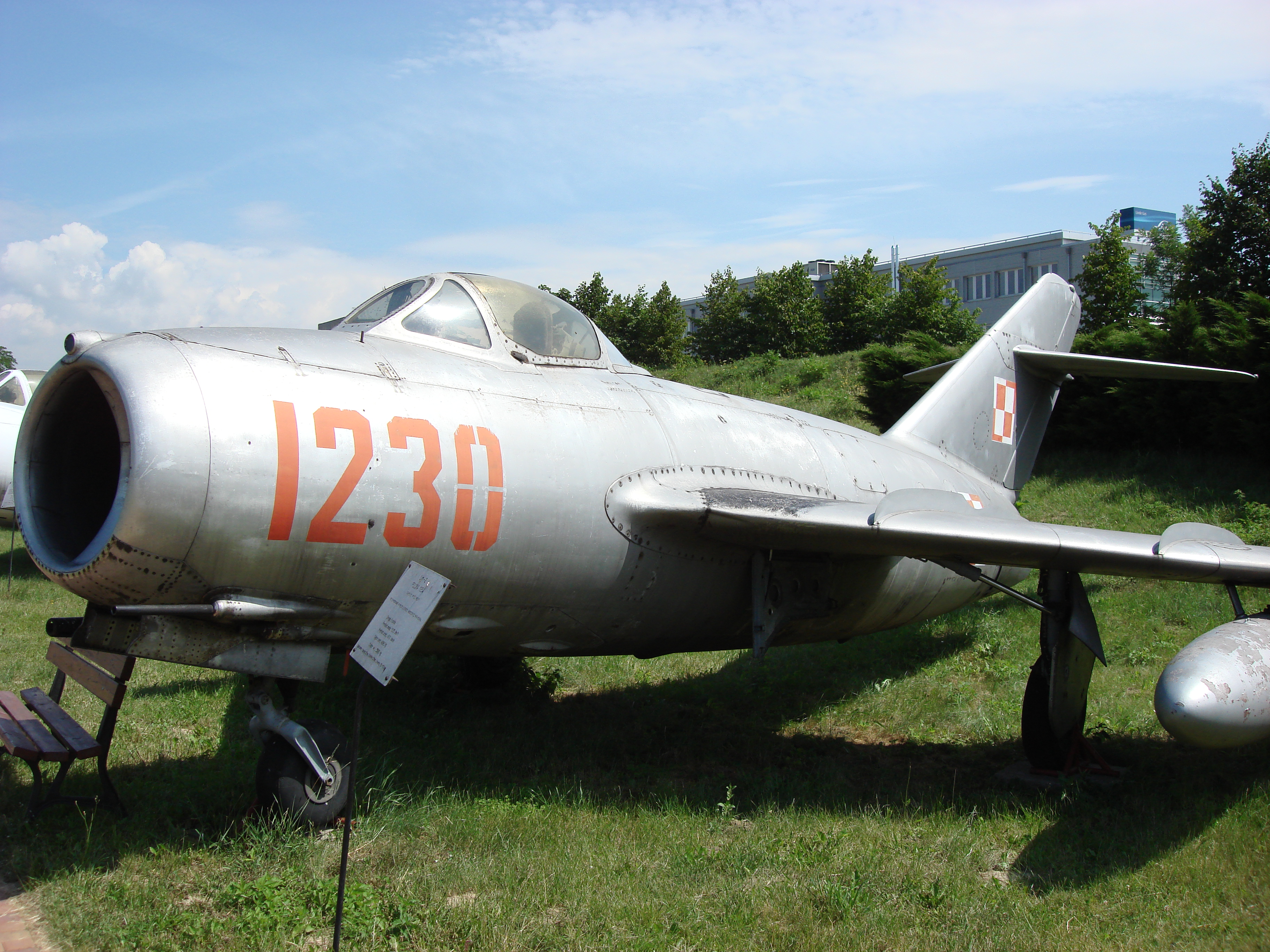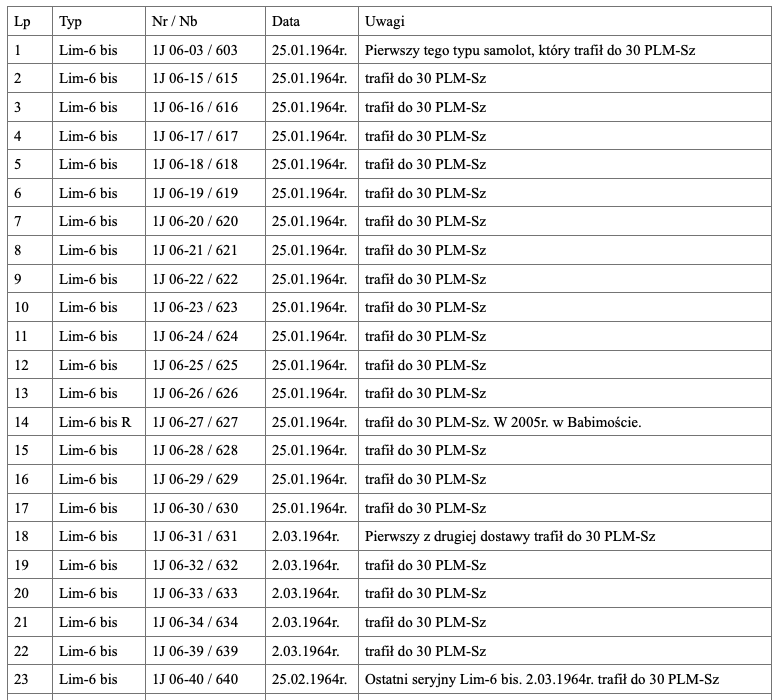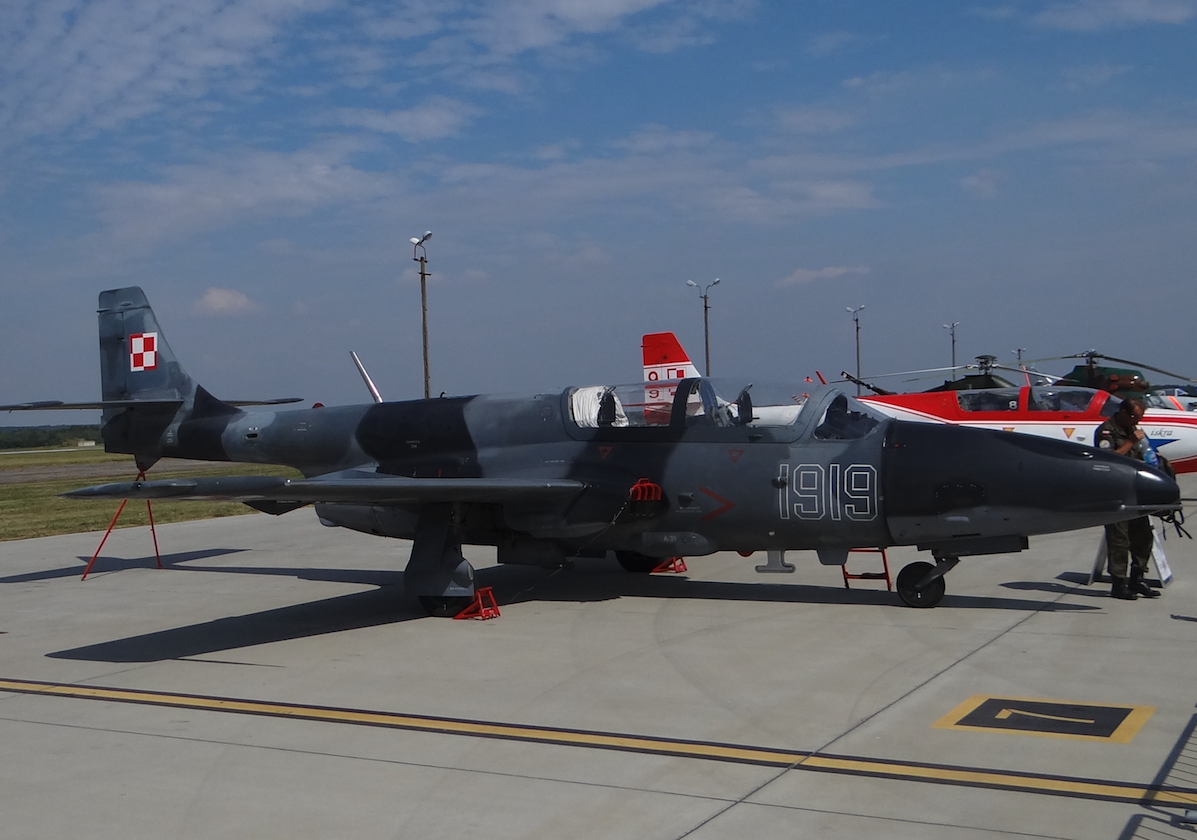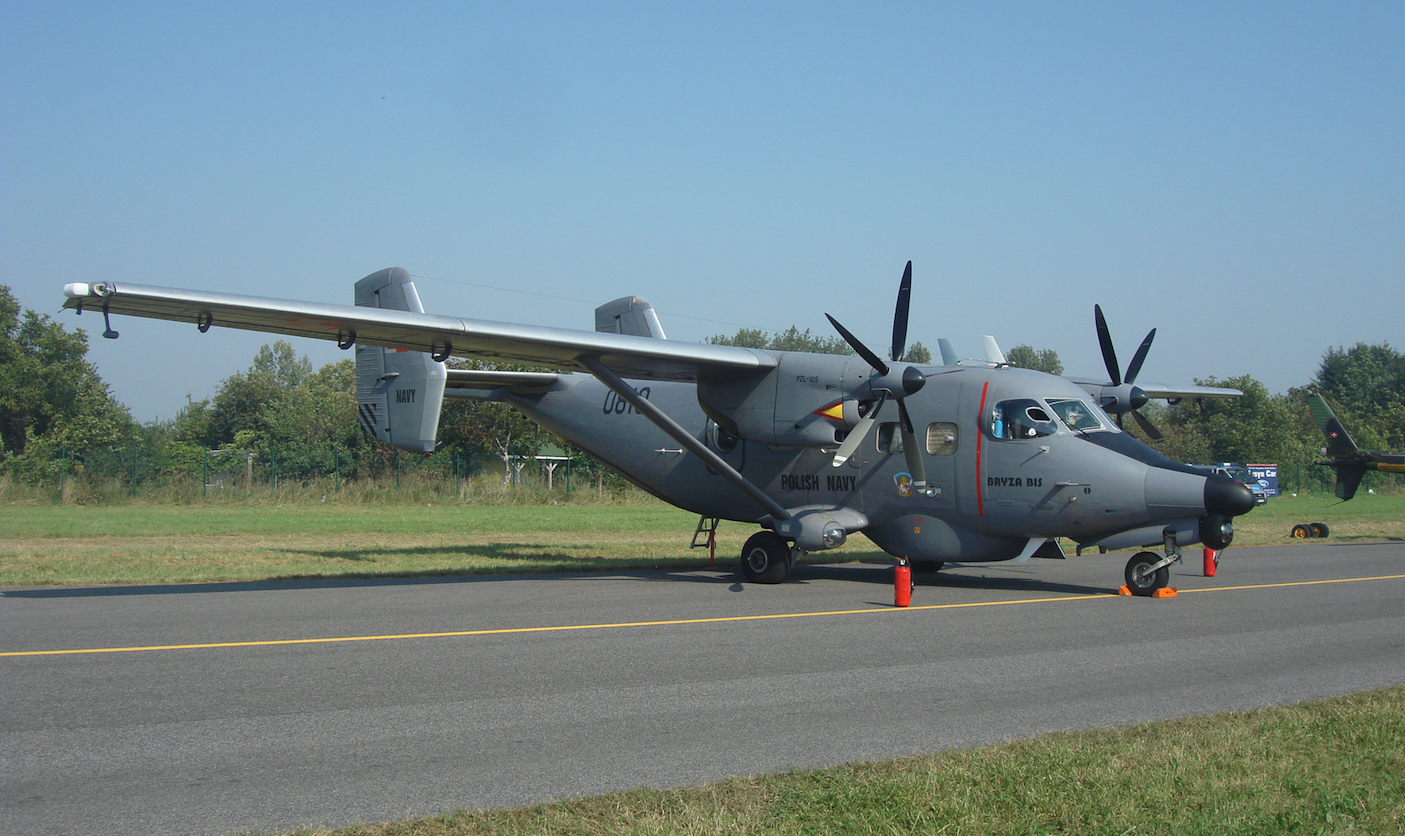Kraków 2008-01-03
7th Naval Assault Regiment
30th Naval Aviation Regiment,
7th Fighter-Assault Regiment (Fighter-Bomber) MW,
7th Special Aviation Regiment MW
1950 - 1995

7th Assault Aviation Regiment. 1944-1946.
In October 1944, the Soviet 382nd Assault Aviation Regiment was incorporated into the Aviation of the Polish Army Front. The unit was renamed the 7th Assault Aviation Regiment and subordinated to the commander of the 2nd Assault Aviation Division. The regiment was stationed in Szypowoje near Wołczańska, in the area of CCCP.
Only after completing the machine park and training some Polish personnel, in March 1945, Pułk decided to move to Polish territory. Part of the Regiment commanded by Regiment commander Major Postojow, during transit in difficult weather conditions, deviated from the course and landed at the airport in Bachmacz. They joined the rest of the Regiment only after the end of hostilities.
On 20.04.1945, from around Tomaszów Mazowiecki, Pułk moved to the Lublinek airport in Łódź, and on 24.04.1945 to the airport near the town of Białęgi.
On April 25, 26, 29, 1945, and on May 1, 1945, the Regiment commanded by Capt. Petriszczwa participated in military operations performing 90 combat flights.
On April 30, 1945, the Regiment was transferred to Steinbeck airport, and on May 1, 1945, after combat operations, he was ordered to transfer to Ujazd airport near Tomaszów Mazowiecki, i.e. to return to Poland.
In May 1945, there were 30 Il-2 assault aircraft in the regiment.
In February 1946, the 7th Assault Aviation Regiment was reformed by Order No. 019 / Org. Commanders of the Polish Army Air Force of January 22, 1946. It was an order to reorganize and transition to the time of peace of units of the Polish Army Aviation.
Revival of the Navy. 1946-1949.
The birth, or rather the revival of the Polish Navy was very slow. Only on September 1, 1946, the Naval Aviation Department was established. On December 17, 1946, the Navy receives the first aviation key for which Puck became the stationing station. However, it did not constitute any combat value.
On February 28, 1948, the Navy created a squadron of 4 keys based on a key in Puck.
On October 18, 1948, the Navy received another Squadron containing 5 keys. This squadron becomes an independent Navy Squadron. Her place of stationing was at the airport in Wicko Morskie. The squadron was equipped with planes; Pe-2 bomber, Il-2 assault, Uił-2 training and assault, Po-2 liaison. In January 1949, Yak-9 M fighter planes arrived, and after some time Yak-9 P.
30th Naval Regiment. 1950-1967.
On March 25, 1950, the 30th Naval Aviation Regiment was formed as Military Unit No. 5576 according to the number No. 35/118. This happened pursuant to Order No. 0235 / Org. Ministry of National Defense of November 22, 1949 and Order No. 01 / Org. Navy commanders dated 12.01.1951. The Independent Navy Squadron became the basis for the creation of the new Regiment. The regiment was located at two airports. One in Wickie Morskie with a fighter squadron and Yak-9 planes. The second at the airport in Słupsk with the command and Squadrons; assault, bomb reconnaissance and liaison. Reconnaissance aircraft Pe-2 and Tu-2 were stationed in Słupsk.
In 1950, 30 PL MW received a banner funded by the society of the city of Katowice. In November 1950, the hunting squadron was transferred to the airport in Gdynia - Babie Doły. In May 1951, the remaining Squadrons came to Babie Doły. But as early as July 1951, some aircraft, mainly bombers, were also based at the Gdańsk-Wrzeszcz airport. This was based on Order No. 041 / Operations of the Navy Commander of April 13, 1951. At that time, the Regiment received school aircraft of the Yak-11 type.

Further changes occurred in 1951. In December 1951, on the basis of a hunting squadron, the formation of the 34th Fighter Air Regiment, as a Military Unit No. 3651, according to the No. 6/100 position, was ordered on the basis of Order No. 095 / Org. Ministry of National Defense of December 10, 1951, and Order No. 066 / Org. Navy commanders dated December 31, 1951.
In the period from April 26, 1954 to August 10, 1957, the Regiment was stationed at the Gdańsk-Wrzeszcz airport, and then at the airport in Siemirowice near Słupsk.
In March 1956, Naval Aviation adopted IL-28 bomber reconnaissance aircraft. Therefore, as of September 1, 1956, the 15th Special Squadron of the Navy Reconnaissance Air Force was formed at the airport of Gdynia Babie on the basis of the squadron of the 30th Navy. The pits, which a month later (October 1956) were moved to the new airport in Siemirowice.
30th Navy Assault Regiment. 1957-1960.
On August 16, 1957, the unit (30th Navy Regiment) was reformed to a new position and renamed the 30th Navy Assault Regiment. This happened in accordance with Regulation No. 0137 / Org. Chief of the General Staff of the Polish Army of July 27, 1957 and Order of the Navy Commander of August 16, 1957. Therefore, in August 1957, the first Lim-2 fighter-assault aircraft began to reach the Regiment, and the Regiment began to be based at Siemirowice airport together with 15 ESLR MW. At that time, the regiment mainly used Lim-2 and Yak-11 aircraft.

30th Fighter-Assault Aviation Regiment. 1960-1967.
In December 1960, the unit was renamed from the 30th Air Assault Regiment to the 30th Air Fighter Regiment. 1960-1967.
In 1960, the first copies of assault aircraft of Polish production Lim-5 M were introduced to the equipment. However, due to the underdevelopment of the structure in Pułki operating these aircraft, several failures and disasters occurred. The aircraft began to be operated with significant restrictions, and after a few months the machines were returned to Mielec for modernization.
In February 1963, the first Polish aircraft, training and training aircraft TS-8 were delivered to the Regiment's equipment. These aircraft significantly improved the training process of young pilots in the unit, and allowed the experienced to consolidate acquired habits.

In January 1964, the Regiment received the first modern assault aircraft of Polish production Lim-6 bis. List of known aircraft delivered to 30 PLM-Sz.

In January 1965, the Regiment received the first PZL An-2 multipurpose aircraft, which was previously used in the 18th Liaison Squadron in Gdynia Babich Doły.
In October 1966, the first MiG-15 UTI fighter aircraft arrived in the Regiment. Exactly, these planes found their way to the 15th Navy Reconnaissance Air Force Squadron in Gdynia Babie Doły.
7th Navy Fighter Regiment. 1967-1983.
In 1967, the Regiment was renamed the 7th Navy Fighter Regiment. (1967-1983). In May 1967, the unit took over the heritage and traditions of the 7th Assault Aviation Regiment and the number and name of 7 PLM-Sz. It happened pursuant to Order No. 07 / MON of 4.05.1967, regarding the transfer of historical names and numbers of frontal units to military units and the establishment of annual unit holidays (Journal of Laws, Ministry of National Defense No. 5, item 21).
In April 1977, training on the TS-8 aircraft was completed, and in May 1977, the first TS-11 Iskra training and training aircraft arrived.

On 1/10/1979, the Il-28 aircraft took off for its last flight. It was also the last flight of this type of aircraft in the Polish Army. The purpose of the flight was a training ground in Nadarzyce, where the plane served as a ground target.
On June 15, 1982, the last PZL Lim-2 aircraft from the Polish Navy were decommissioned.
7th Navy Fighter Regiment. 1983-1988.
In 1983, the Regiment was renamed the 7th Navy Fighter Air Regiment. (1983-1988). On February 15, 1983, the Regiment became a hunter-bomber. This was related to the plans to equip the unit with new equipment. The basis was the Order of the Chief of the General Staff of November 1982.
At the same time, on December 1, 1983, the 28 Navy Rescue Squadron, which was stationed in Darłowo for the 16th Special Navy Regiment, was reformed.
7 PLM-B was in stock at the time; 36 Lim-6 bis, 8 SB Lim-2, 5 TS-11 Iskra, while 15 SELR was in stock; 10 SB Lim-2 A, 2 SB Lim-2.
7th Navy Special Aviation Regiment. 1988-1995.
In 1988, the Regiment was renamed the 7th Special Navy Regiment. (From 1988 to 1995.
In 1988, there were very significant reforms in the Naval Aviation. On 1 July 1988, it was dismantled; 7th Fighter-Bomber Regiment, 16 Special Aviation Regiment and 15 Independent Reconnaissance Aviation Squadron. On their basis a new 7th Special Navy Regiment was created. The sub-branches were based at two airports; Siemirowice and Darłowo.
Also this year (1988) operation of the Lim-6 bis aircraft was officially completed. However, this was not the end of changes. Already on April 1, 1991, the subunits stationed in Darłowo formed a separate unit - the 40th Submarine Squadron and Rescue Squadron.
In March 1991, the last SB Lim-2 A aircraft were decommissioned, and the TS-11 Iskra R aircraft were introduced.
On October 25, 1994, the first An-28 aircraft intended for patrol and reconnaissance flights was officially handed over to the state of Pułk at PZL Mielec. It was exactly the M-28 B 1 R Bryza aircraft.

3rd Air Squadron. 1995 year.
The years 1994–1995 were a period of reconstruction of Naval aviation structures. Three Navy Air Squadrons have been created from existing units; 1 Pucki DL - MW in Babich Doły (mainly with MiG-21 bis fighters), 2 DL - MW in Darłowo (mainly with helicopters to ZOP) and 3 DL - MW in Siemirowice (with TS-11 R and M-28).
On December 31, 1995, the Regiment was transformed into the 3rd Air Squadron and the 5th Security Battalion, subordinated to the commanders of the Navy Air Brigade.
They entered the squadron; Reconnaissance Squadron with the TS-11 Iskra R and TS-11 Iskra aircraft. Patrol Reconnaissance Squadron with An-2, M-28 Bryza aircraft. The TS-11 aircraft received a new camouflage, new emblems and white NAVY inscriptions.
On October 12, 1996 (August 27, 1997), a ceremonial handing of a banner funded by the society of the Kashubian Land took place. At the same time, by decision of the Minister of National Defense No. 155 / MON of September 2, 1997, the Squadron received the name "Kaszubski". Navy Commander Admiral Ryszard Łukasik handed the banner of the Squadron Commander to Commander-in-Chief Mirosław Jankowski. Sztandar was funded by the society of Kashubian communes Bytów and Sierakowice.
On October 12, 1996, the 5th Security Battalion received a new banner.
The 3rd Squadron was an independent navy fighting unit intended for; Operational and tactical reconnaissance of surface objects. Guidance to detected MW impact force objects. Performing transport and connecting tasks. Performing rescue tasks on land and at sea.
On July 1, 1997, the state of the 3rd Kashubian Air Squadron MW were; 6 TS-11 R Iskra bis DF, 8 TS-11 Iskra bis DF, 2 An-28 RM renamed to M-28, 5 PZL An-2.
Equipment used by the regiment;
Iliuszyn Ił-2, Iliuszyn Ił-10, Jakowlew Jak-9, Jakowlew Jak-11, Pe-2, Tupoliew Tu-2, Po-2, Antonow An-2, PZL Lim-2, PZL Lim-6 bis, PZL SB Lim-2 A, PZL TS-8 Bies, TS-11 Iskra bis / R, PZL Mielec M-28 ( An-28 ).
Written by Karol Placha Hetman
